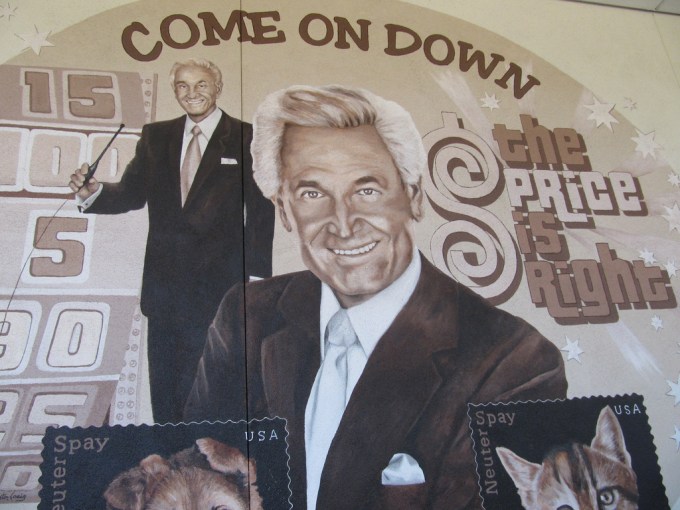Will There Really Be An Uber For Everything?

Editor’s Note: Brian Ascher joined Venrock in 1998 as a Kauffman Fellow and is currently a Partner based in Venrock’s Palo Alto office.
Though people have turned on them lately, I love using Uber.
From the very first time (September 28, 2010 to be exact) I saw the little town car icon crawling across the map coming towards my little green dot, I knew taxi cabs, airport car services, and parking lot attendants in downtown SF were going to see a whole lot less of me.
Tens of millions of riders around the globe love this service so much it has become its own verb. And at a $40 billion valuation, it’s no wonder that it has become cliché to describe other on demand mobile services (ODMS) as the “Uber for X”. Any offline service that can be reserved, or delivered to you physically, or transmitted to you virtually through your smartphone seems to have a startup or several trying to become the Uber for that particular vertical.
A few of these will turn into very large and successful global internet brands, grabbing major market share and even greater market capitalization from the offline rivals they out innovate. Most, however, will succeed on a much more limited scale, making only a small dent in their industry and servicing limited geographic markets.
My own framework for trying to determine which markets and which companies will be truly transformational is simple. Start with a service where the greatest percentage of customers are painfully unhappy with the existing providers. Fortunately for entrepreneurs and investors (but unfortunately for consumers), many service sectors suffer major challenges around availability, quality, transparency, and pricing.
However, not all problems are equally painful. Most people don’t consider the logistics around getting a massage or attending a yoga class to be at nearly the same level of pain and frustration as home renovation or trying to sell their old car privately. When questioning how often one needs a service, frequently used services have the advantage of being more likely to become sticky habits versus one-off trials. We are much more motivated to find solutions for everyday pains over occasional pains.
Next, ask yourself how can an on demand mobile service leverage smartphone technology, network effects, economies of scale, rich data, crowdsourcing, and the other tools found in a tech entrepreneur’s arsenal to build a service that truly delights customers and “bends the curve” in terms of customer experience.
This is obviously the really hard part.
Great service is hard to consistently deliver generally, but there are those services that are innately more challenging (like home or auto repair, where the nature of the service is to diagnose and fix idiosyncratic physical problems that catch consumers by surprise leading to an initial state of frustration and financial worry).
While aspirational to think that ODMS can fix even the most broken service sector, often the symptoms of pain in the hardest industries may need to be treated progressively over time. Thus, it is the total distance travelled between the typical incumbent service level and the redefined ODMS service level, rather than the start or end point on an absolute scale, which creates the opportunity to create a truly great business.
How can on demand mobile services create delight versus their offline incumbents?

Immediacy And Reliability
The main point of most ODMS is to use the smartphone to be your remote control for life so that when you push the button for your ODMS stuff needs to happen, as fast and consistently as possible. Uber leverages local network effects between drivers and riders, and invests heavily in data science and AI simulations to insure that rider wait times are as short as possible and drivers are as busy as possible so they can earn the most money. Without short wait times Uber would not be nearly the magical experience we all love.
Another example of instant fulfillment is Doctor on Demand*, a service providing immediate smartphone video visits with a board-certified physician so that you don’t have to wait for days or weeks to get an appointment to see your doctor or head to an after-hours clinic or emergency room for routine medical needs. Cleary you wouldn’t use Doctor on Demand if you have severe chest pain or are bleeding profusely, but there are a huge variety of use cases for which you don’t need to be in the same room as your doctor and the convenience of an immediate appointment, at one third the cost (on average) compared to an in-office visit, is so compelling that employers are offering DoD as a benefit to their employees.
For the majority of services that can’t be delivered virtually, like Doctor on Demand, the act of rolling out city by city is expensive and time consuming. They require an investment in “boots on the ground” to recruit and train workers, market to new users, and assure quality in new cities.
If you are making a change with a revolutionary service breakthrough, you can attain a superior growth rate; which attracts the capital to enable even a global expansion strategy like Uber or Airbnb.
For many ODMS that are only incrementally improving the traditional service model, geographic expansion will likely have to come more slowly and may ultimately max out regionally or in the major US cities. This is not necessarily a bad thing, as many enduring businesses can be built as the most technologically advanced player in a region.
Personally, we still enjoy PurpleTie’s dry-cleaning home delivery services, which started as a VC-backed effort to go big with an online nationwide dry cleaning service but failed and got acquired by the bootstrapped CleanSleeves (who apparently liked the PurpleTie name better).
Fifteen years later PurpleTie.com operates only in the Bay Area between San Mateo and San Jose and seems to have a healthy business. Perhaps the new generation of ODMS startups providing dry cleaning and laundry delivery will go substantially further than CleanSleeves. If they do, it will be because they figured out how to create more customer delight than just mobile app order-placement and efficient delivery. My wife is quite eager to give Wash.io a try, but whether or not she would stay loyal to them versus the next cheaper version will depend on how well they turn a relatively commoditized service category into a truly differentiated experience.
Quality
Service businesses are so hard to build because they rely on people to interact with customers as much or more than they rely on computer code. Managing people, especially a workforce of independent contractors rather than full time employees, is a lot more variable than executing software routines. Recruiting, selecting, training, and managing workers is a core element of any ODMS. Background checks, license verification, detailed applications and face to face interviews are all part of the selection process.
Most services rely on their customers to rate service providers and tend to ruthlessly cull those drivers/doctors/plumbers/etc that fall below a rating threshold, often a fairly high bar. Doctor on Demand checks the lighting, sound, and appearance of every doctor before every virtual shift. Some services even provide a satisfaction guarantee on the completed job, such as Red Beacon’s* $500 offer.
Service quality can often be a matter of individual taste. For example, in the home cleaning category services like Homejoy may delight 9 out of 10 customers but it will be an endless uphill battle to please the pickiest consumers when it comes to something as subjective as a clean home. Quality is not just the absence of problems, but also those unexpected touches which delight.
Good Eggs, for example, would unexpectedly throw in a free gourmet treat or two when we first started the service. The freebies stopped once they hooked us as repeat customers but the amazing quality, friendly service, and personal touches like handwritten notes have made us loyal. There are simply no shortcuts when it comes to delivering consistently great services levels and ultimately quality can make or break a business regardless of whether they have the best looking mobile app.

Price
Tech enabled services are often far more efficient than traditional businesses at acquiring customers and aggregating demand through digital channels, viral marketing, and highly visible brands. This often enables cutting out layers of middlemen in the value chain. Additionally ODMS can rely on large regional facilities and cheaper real estate for physical goods processing than the sub-scale storefronts and expensive Main Street locations of their offline peers. Passing a good portion of these savings on to consumers is perhaps the smartest way to generate trial, grow quickly and hook customers on your service.
BloomThat is a flower and gift delivery service that does a wonderful job of curating their selection and providing same day delivery, but their pricing advantage vs 1-800-FLOWERS is so significant that they have dramatically grown the frequency of gift giving among their customers far beyond the traditional Mother’s Day and Valentines Day holiday spikes. Some of the smartest pricing plans still include premium and ultra-premium levels, such as Uber Black or Uber Lux, for the truly price insensitive segment, but the mass market almost always appreciates a good value, especially when being asked to try a brand new service through a new medium.
In the long run, one hopes that there is enough technology being leveraged, economies of scale, and disintermediation in your ODMS to be the higher margin, lower cost provider in your industry, not just the company most willing to subsidize losses indefinitely.
Payments
Rolling out of your UberX curbside without having to fumble through your wallet for cash nor waiting for your credit card to be run through a mobile point of sale is simply addictive.
Getting food delivered by services like DoorDash or Seamless without the awkward eye-to-eye tipping procedure with the pizza guy is very easy to get used to. Customers simply expect that effortless payment is part of the magic in a service that has been newly redefined as on demand and mobile.
The nice part is that this also solves many business model problems around your workers handling cash or credit card numbers, deadbeat customers, and leakage from your workers attempting to cut you out of a side deal they offered your customer. The downside for theODMS is that for low priced transactions the interchange fees on these credit card payments can be a significant hit to your margin, and on the other end of the spectrum certain big-ticket services that require onsite estimates like home renovation may not easily lend themselves to being in the payment flow. Over time, however, we will see the vast majority of ODMS handle payments in the background as part of the consumer experience.
So, will there be an Uber for every service industry? There will be some, but not many in terms of a global, dominant, hugely valuable iconic brands. Some industries are just not important and/or frequent enough to our daily lives, or unpleasant enough as they exist today, whereas other industries face service challenges so fundamentally hard to solve that it will be a long while before we see an ODMS truly solve them.
Just like with the B2B Marketplace craze of the late 1990s we will see massive experimentation across an enormous swath of the consumer services sector. We will also see traditional offline service businesses forced to up their game and become more technologically sophisticated. So while there may only be a handful or so of Uber-sized winners, there will be many smaller ODMS who find some degree of success, and the biggest winners of all will be consumers themselves.
No comments:
Post a Comment